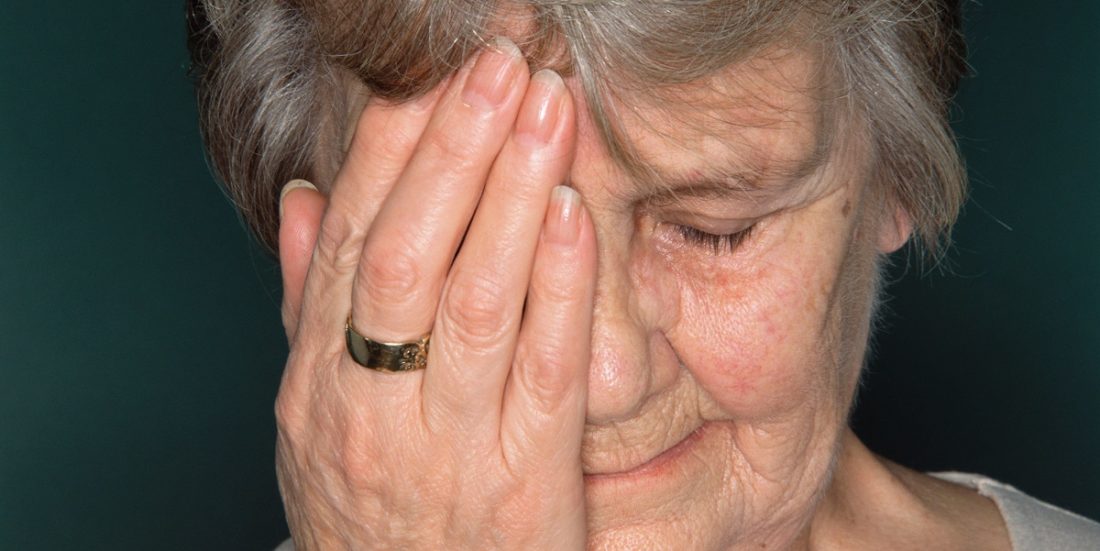Living longer — but with illness and pain
We are living longer than ever, but with more years of chronic illness and pain. Researchers are asking, shouldn’t health care authorities be focusing more on curing these chronic illnesses?
QUALITY OF LIFE: What doesn’t kill you makes you stronger, according to Friedrich Nietzsche – although he probably wasn’t thinking about the ageing process when he penned this famous statement. Nobody would claim that living with chronic back or neck pain, anxiety, migraines or diabetes makes you stronger.
“People don’t die of these types of diseases, but it reduces their quality of life. They aren’t the cases that fill up doctor’s offices, but this doesn’t mean that they aren’t important. We need to step up our work on these types of non-lethal diseases, when it comes to treatment, research, and community planning,” says Lars Jacob Stovner, a professor of neurology at NTNU.

Nobody would claim that living with chronic back- or neck pain, anxiety, migraines or diabetes makes you stronger. Photo:Thinkstock
Stovner has worked for several years on the comprehensive international health study called “Global Burden of Disease”. Different research groups have studied the spread of 301 acute and chronic diseases in 188 countries. The study began in 1990, and has been updated regularly until 2013. He has contributed to the project with a study about migraines and headaches.
“The quality of health statistics varies wildly from place to place, and many countries are missing statistics about certain illnesses. In this study, we collected all of the available statistics about different conditions and did a quality assessment of the studies. Together with a number of other indicators that we know have to do with overall health, we were still able to come up with reasonably good estimates,” he explains. “It gives us a good basis to see development over time.”
The trend is clear in most places: average life expectancy is going up, in part thanks to better health care offerings. However, the study also shows an increase in chronic disease and pain. We are able to survive diseases that previously killed us, but we live longer with non-fatal diseases.
“We’re seeing a transition from mortality to invalidity, from malnourishment to obesity, from infant mortality to adult sickliness. Health care services and the way our societies have developed mean that less people die of individual diseases. On the other hand, it also means that we have to live longer with diseases that we aren’t able to cure,” Stovner says.
Years of disability
The study uses a scale known as YLD (Years Lived with Disability), based on a system that grades causes of disability by different injuries and diseases. The number of years lived with disability increased globally from 540 million in 1990 to 765 million in 2013. This is due both to increased life expectancy and population growth.
Back pain and mental illness are the most common causes of many years lived with disability in all 188 countries included in the study. Chronic airway problems, neurological illness, muscular/skeletal pains and drug abuse are also high up on the list.
In sub-Saharan Africa, HIV/AIDS and tuberculosis also contribute to increasing the number of years lived with disability, although cases of HIV/AIDS have stagnated in the past few years. Rates of other contagious diseases have also decreased heavily.
In the past, war and conflict in places such as Cambodia, Nicaragua and Rwanda have also led to high rates of debilitating injury.
Norway: back pain and anxiety
The problems that lead to the most years with disability in Norway are chronic neck and back pain and anxiety, for both men and women. After this comes depression, injuries from falling, diabetes, hearing loss, migraines and Alzheimer’s.
Between 1990 and 2013, cases of diabetes increased by 50 per cent in women and 98 per cent for men, making it the disease that saw the greatest increase in terms of years lived with disease. Chronic neck pain has seen a YLD increase of 20 per cent in women, and 33 per cent in men.
The Alzheimer’s numbers are going up, but cases of chronic respiratory disease have gone down, presumably due to changes in smoking habits, according to Stovner.
“We’re seeing a clear increase in life expectancy, which is good. But at the same time, we’re seeing an increase in years lived with disease. Traditionally, the health sector focuses on fighting deadly diseases like cancer and cardiovascular disease. But maybe we need to start prioritizing chronic, non-lethal disease and pain, like back problems, tension headaches, migraines, and anxiety, all of which have a significant impact on public heath. These problems affect a lot of people, and lead to many years lived with disability and lowered life quality,” says Stovner.
Many involved
The project Global Burden of Disease was started as an initiative from the World Bank and the World Health Organization, WHO. The goal was to create a better tool for deciding the distribution of health resources. Researchers from a long list of countries are involved in the project, which has been coordinated by the Institute for Health Metrics and Evaluation, at the University of Washington in Seattle. The project is still ongoing.
“We’ve already been invited to send in a new update with the 2015 numbers. Challenges in the health sector are constantly changing, and as such, health care services need to be easily adaptable and ready to change their priorities. I’m fairly certain that the project will become increasingly important for monitoring population health in different countries and regions as well as globally, and to help decide allocation of health care resources,” Stovner concludes.
Reference: The GBD 2013 analysis of YLD was published in the Lancet in June. It can be downloaded here.






